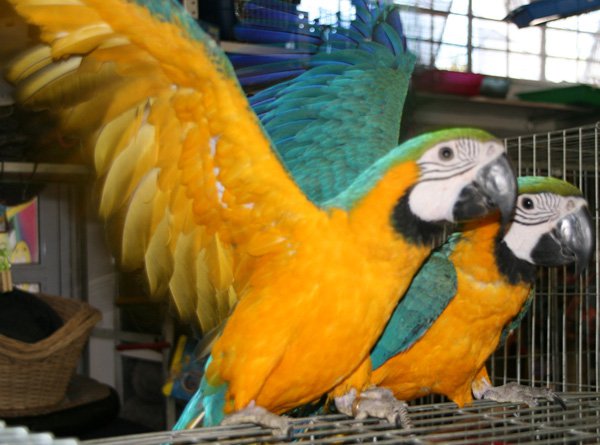The yellow tang or Zebrasoma flavescens belongs to the family Acanthuridae. They are endemic to the shallow water reefs of the Indo-Pacific. Most of the yellow tangs sold in the US are native to the Hawaiian Islands.
Unlike many tangs and surgeonfish, yellow tangs have a solid color palette. Their coloration does however morph at night or in the presence of a perceived threat. During periods of inactivity or escalated stress levels they will develop a light brown coloration mid-body followed by a white horizontal band. The daffodil coloration will return quickly once they are active or the danger has passed.
These fish have the flat rounded bodies typical of a tang, a slightly elongated snout and very full anal and dorsal fins. Their fins give their overall profile the general shape of an arrowhead. This species is also marketed by the aquarium industry under the names Yellow Hawaiian Tang, Yellow Sailfin Tang, and Yellow Surgeonfish.
This species is more tolerant of fluctuating water parameters than most of its relatives. It is a hardy, relatively disease resistant fish with an easy care rating. Of all the tangs and surgeonfish made available by the aquarium trade, this tang sits at the top of the list for novice saltwater aquarists. This makes the yellow tang the most widely exported and popular fish in its family. Tangs are a sub-grouping of the family commonly referred to as surgeonfish. All tangs are surgeonfish. Not all surgeonfish are tangs. Just in case you weren't sure why you so often see the two grouped together in the same sentence. Tangs are much more prevalent in home aquariums than are other surgeonfish.
This is a medium sized fish. It will reach an adult length of 6-8 inches. They are a semi-aggressive species but are not known to bully fish of similar size and attitude. They do indeed make an excellent community fish as long as they are housed with suitable tank mates. They will, however, nibble at small crustaceans on occasion. A principle part of their diet consists of marine plant life. Keep this in mind when deciding if they are right for your particular marine reef tank. These tangs can be housed together in a group as long as they are simultaneously introduced to their new surroundings. This will not give them a chance to establish territorial boundaries before they encounter another member of their species. Yellow tangs may exhibit aggressive behavior towards other tangs and surgeonfish. This species will function perfectly well in a 75 gallon aquarium provide it is sparsely populated. They will require at least 100 gallons if housed in more populace environments.
This species is primarily omnivorous. In their natural environment their diet consists primarily of benthic algae and marine plant life. As is common with many community fish, tangs will eat food products placed in the aquarium for the other inhabitants. This is to be expected. They will jump right in the middle of a brine shrimp feeding frenzy along side their other tank mates. As long as you make sure they receive an adequate supply of plant matter this will not present a problem. Tangs will eat wild grasses, lettuce, spinach, and have been known to munch on other common table vegetables. Plenty of live rock and dried algae sheets will help insure a well balanced diet. A sure sign of nutritional deficiencies is a fade in their color palette. If you observe this beginning to happen, make sure to increase their plant matter intake to avoid potential health problems.
If you are considering purchasing a tang for your aquarium you should be aware of two things. Tangs are rather prevalent to ich. They should be quarantined for at least two weeks before being added to the general population to avoid the spread of this common fish ailment. Surgeonfish derive their names from the razor sharp spines on the anterior parts of their bodies. Yellow tangs have extremely sharp, retractable spurs used as a means of self-defense located near the base of their tails. All surgeonfish should be handled with caution.
The males and females of this species are identical in appearance. They have not been known to breed in captivity.

 More About The Norwegian Forest Cat
More About The No
More About The Norwegian Forest Cat
More About The No
 Dog Gear and Accessories for Training
Dog Gear and Accessories for Training
Canines
Dog Gear and Accessories for Training
Dog Gear and Accessories for Training
Canines
 Airline Travel And Your Dog
Airline Travel An
Airline Travel And Your Dog
Airline Travel An
 Reasons Why Your Dog May Have Problems Sitting
Reasons Why Your
Reasons Why Your Dog May Have Problems Sitting
Reasons Why Your
 How Can You Tell If A Dog Is Bored?
How Can You Tell
How Can You Tell If A Dog Is Bored?
How Can You Tell